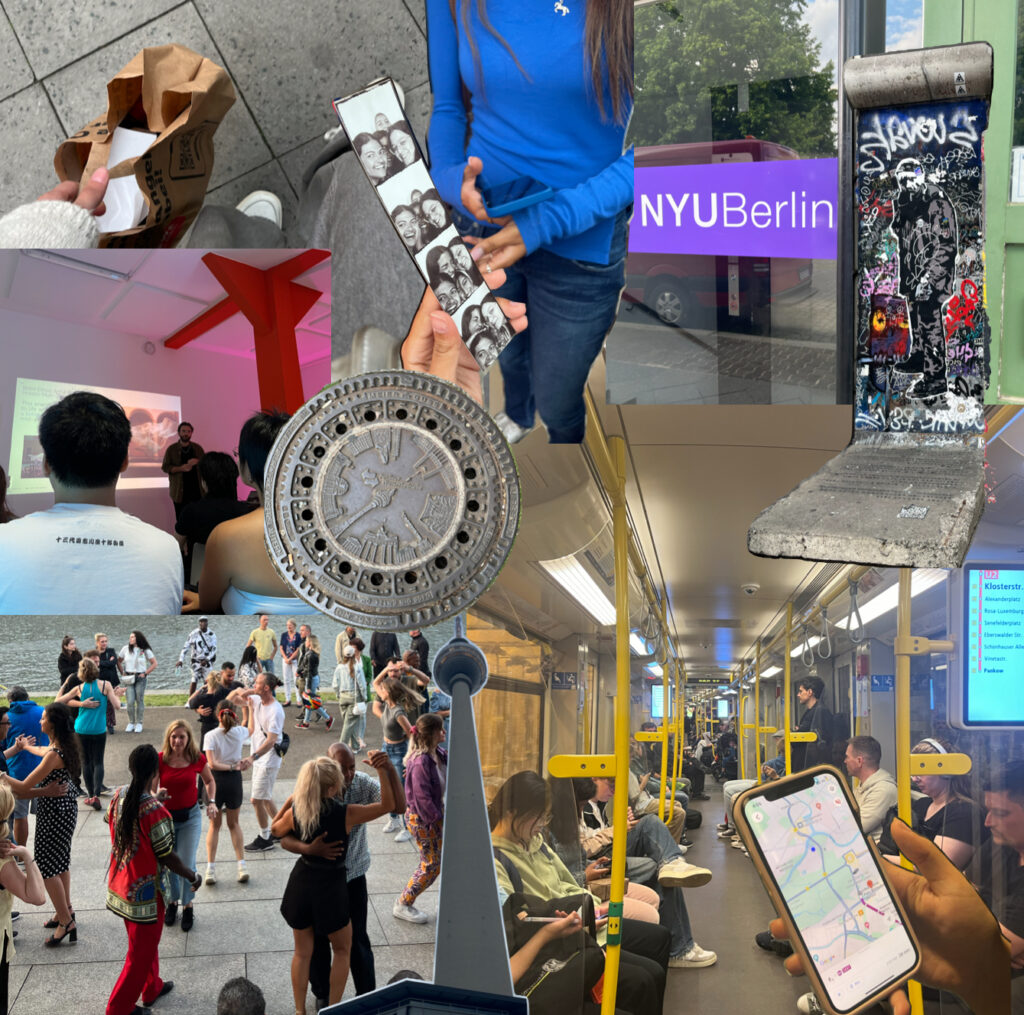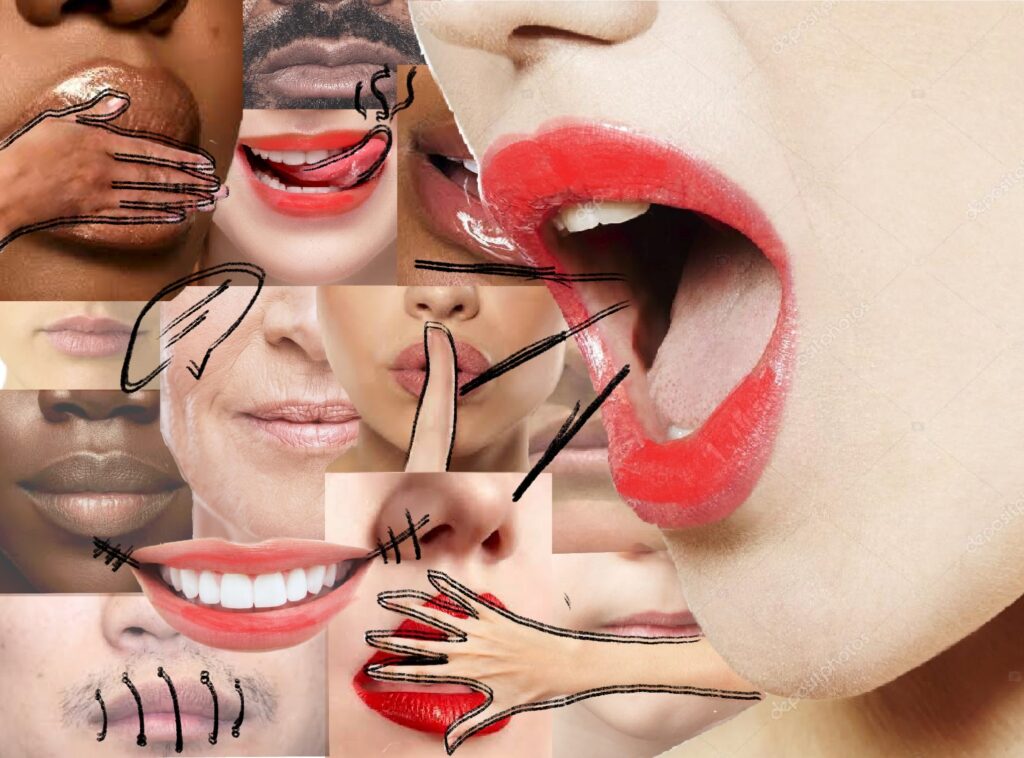I made a little scrapbook of my j term experience in Berlin 🙂
(using canva, procreate, and paper)
I made a little scrapbook of my j term experience in Berlin 🙂
(using canva, procreate, and paper)
Before this class, I wouldn’t have considered myself a creator or an artist. I saw myself solely as a consumer and admirer of art. However, I’ve realized that even before this class, I’ve been creating quite a lot. I’ve baked, made jewelry, embroidered, painted, sketched, created pottery, made films, taken photos, written short stories, and more. I am not just a consumer of the arts; I participate in creating them as well. We all do.
Reflecting:
When I found out we would be doing meditations in class, I got excited. I’ve done it before and enjoy it, but I have to be forced to do it; otherwise, I don’t have the patience. During most of our meditations, we had the windows open, so we heard a lot of noise. On the first day, the professor mentioned trying not to get annoyed by the sounds but accepting them and allowing them to exist. In the next meditation, that’s what I tried to do. It kept getting easier to allow the sounds we can’t control to just be.
I didn’t think anything related to meditation would impact me this much, but it did. I’m someone who likes control, planning, and predictability. Since coming on this J-Term, I haven’t been able to do much of that. I promised myself to make the most out of this experience, and when things outside of this course didn’t go as planned or stressed me out, I forced myself to accept them because I didn’t want them to negatively affect this experience. If I can’t change what is happening, I can change how I view and respond to it. And that’s what I’ve been learning to do—accepting and allowing things to be, which I never thought I could do.
Reflecting on Kermit’s idea that “we create our world with every thought,” I’ve come to see how my perceptions and thoughts shape my reality and creative output. This class has shown me that creativity isn’t just for traditional artists; it’s in everything we do. Lateral thinking encourages us to look at problems from new angles, while vertical thinking follows established patterns. Both styles shape our reality, influencing how we process and interpret information. This aligns with Kermit’s idea, reinforcing that our thoughts, specifically our fears and concerns about judgment, shape our creative expression and the reality we perceive, and make our own. Which is what meditating helped me do.
Creating:
For the making tasks, I challenged myself with collages and soundscapes, art forms I usually avoid. Normally, I might sketch random things, mostly facial features, but the lateral thinking techniques pushed me to explore new forms.
My favorite techniques are the “why” technique, Random Stimulation, and generating alternatives. The “why” technique challenges an idea by continually asking why to each response, making it easy to use for anything. Random Stimulation helps connect things you wouldn’t normally link together. Generating alternatives is a great way to challenge an idea or look at it from a different perspective. Since everyone interprets art differently, this technique helps us see our own art in a new way. It’s refreshing to interpret your art differently sometimes.
Visits:
Having the artist visits was great since I’m not part of that community, nor do I know what artsy majors do once they graduate. So it was inspiring to see people passionate about their work and doing what they love for a living.
It was inspiring to learn that Merche, who hasn’t studied music or how to play an instrument, create her own. Similarly, Marco hasn’t studied biology but works with and is inspired by animals and plants. Their stories show me that you don’t need formal education or expertise to pursue and enjoy your passions. That I could pursue the arts without having a degree in it or be an expert at it.
Honestly, even after this class, I still wouldn’t label myself as an artist or creator, but I now recognize that I do engage in artistic activities and enjoy them. Creating art is not part of my identity, nor do I want it to be, but it is something I genuinely enjoy doing alongside consuming it. And it was wonderful to see art from a perspective I’m sure I wouldn’t have experienced any where other than Berlin. From the people, to the weather, the history, the art, the friends I’ve made, and the memories we’ve shared, all will now have a place in my heart. It feels like I’ve been here for a whole semester, but also like I just arrived yesterday. I promised to make the most out of everything; I did, and thankfully had an amazing experience, and learned a lot about the arts and myself in the process.

I really enjoyed the first film he showed, mainly because of the storytelling aspect, also the process of how it was created was very cool.
He mentioned something about how we shouldn’t add all things at the same time just to include them, instead focusing on/using one thing then adding what you need. I agree, and need to apply that more.
Flow happens when we are fully absorbed in an activity. This state occurs when there is a balance between the challenges of the activity and our skill level. When these are aligned, the activity becomes deeply satisfying and rewarding. Throughout history, the importance of these activities has been recognized. Rituals, art, and play have been central to human life, offering joy, meaning, and community. These activities, which might seem “unproductive,” are essential for a fulfilling life. I truly think those that are happy in life experience flow often. In our modern, fast-paced world, it is important to remember the value of flow-inducing activities. They are not a waste of time but an important investment in our mental and emotional health, because they help us so much.
My two random words were “Lip” and “Society.” This piece is a visual exploration of how voices are perceived and utilized within society. This collage is a commentary on the diverse experiences of individuals within a society—how some voices are amplified and misused, others are stifled or ignored, and many remain unheard despite their silent cries.

The struggle between staying true to one’s art and meeting external expectations is real, and a true understanding of art, especially ones art takes time. Acceptance and approval of one’s art has its challenge in balancing personal expression with what the viewers expect, I think trying to have both is not impossible but very unlikely and difficult to do. Trying to control the way others view our work is impossible; while we can guide them or showcase a specific perspective, everyone perceives and interprets things differently. It can be hard if the art itself is completely misunderstood. However, I think once we put our art out there, we should not be concerned with how it is interpreted but be intrigued by the many ways different people make meaning of it.
“When you act out of fear, your fears come true.”
I relate more to the second family of fear; fears about your reception to others, which “prevent you from doing your own work.” It’s interesting because the art I create for myself looks different to the art I create knowing I will be showing or displaying it to someone. Not really about the outcome but the process of creating which is very different. I think when I’m creating for myself I’m more likely to take risks and experiment similar to the quantity group, while when creating for others, the fear of judgement can lead to a more limited and cautious approach, like the quality group. It’s insightful to see the results of the two groups aswell.